Lower Valdarno - Educational Itinerary
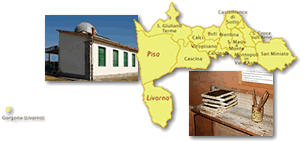
With its age-old University, Pisa has always represented the cultural centre of grand-ducal Tuscany. Precisely the research conducted at the University of Pisa gave birth to several of the most important museum collections on this territory. In the spirit of this tradition, aimed at education and the diffusion of knowledge, several museums have been created with the intention of illustrating, also to young people, important aspects of culture and science.
The Museo Didattico della Civiltą della Scrittura in San Miniato can constitute the ideal point of departure for this route. By means of plaster casts and reproductions, the original exhibition makes it possible to trace back the history and development of the ancient writing cultures of the Mediterranean.
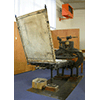
The Museum’s purpose is to reconstruct the most important stages in the history of writing, from the signs traced on stone up to today’s digital writing, and to illustrate the evolution of signs, alphabets and of the supports on which writing has been deposited and preserved in the course of time. Several ancient writings of the Mediterranean are documented with copies or plasters of the originals: clay tablets with cuneiform characters, Egyptian papyruses and canopicjars with hieroglyphics, several of the principal Etruscan inscriptions (the Pyrgi laminas, the Perugina Cippus, the Tabula Cortonensis, the Bronze Liver of Piacenza, etc.) and, finally, military diplomas and fistulae aquariae (lead pipes) of the Roman epoch.
The Museum is completed by a series of workshops that seek to stimulate the capacity for observation of the younger guests who are free to touch, use, and handle the objects and instruments on show. Young people can also expand on several themes such as Egyptian and Etruscan writing, the medieval scriptorium and printing with a press.
(Graziano Magrini)
Following the Pisa-Livorno interchange westwards, then taking SP66 at the exit for Montopoli, and continuing on until Via Valdinievole, a well-worth stop is the observatory of Santa Maria a Monte where, by agreement or verifying the periodical activities of the group of astrophiles, it is possible to take part in the centre’s research and divulgation programme.
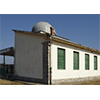
The Observatory of Santa Maria a Monte, situated in the Tavolaia locality, began to operate in September 1999. Established by the Commune, which remodelled a building formerly used for scholastic activities for this purpose, it has a meeting hall and an environmental laboratory on the ground floor, with the telescope and its revolving dome on the first floor. Its site is included in the list of those protected against light pollution (Regional Law no. 37).
Through an agreement stipulated with the Commune, the Observatory is managed by the Isaac Newton Association of Santa Maria a Monte which, officially constituted in 1992, is engaged in teaching and divulging astronomy, as well as in research. The Association's educational activities are carried out in the town of Santa Maria a Monte and the surrounding communes, and initiatives are frequently organised in the public schools. The Association also holds numerous courses in astronomy on various levels, while the Observatory collaborates in the programme for international research on the minor planets organised by the Minor Planet Center of Cambridge, U.S.A.
(Graziano Magrini)
Continuing towards Bientina and Vicopisano in the direction of Pisa, leave SP2 at Caprona and, after about twenty kilometres, we come to the grandiose monumental complex of the Carthusian Monastery of Calci. Here is housed the Museo di Storia Naturale which, for its zoological, palaeontological and mineralogical collections, must be numbered among the most important in Italy.
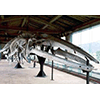
Already in the late 16th century, at the initiative of the Medici, a "Gallery" of natural specimens and curiosities was set up at Pisa's "Giardino dei Semplici" (the Botanical Gardens). This was the first core of collections that were to be continuously enriched, thanks to close ties with the University. Having become entirely independent of the "Giardino dei Semplici" (1814), during the course of the 19th century, under the direction of Paolo Savi, the Museum became one of the most important in Italy for its splendid zoological, geological, palaeontological, and mineralogical collections, as well as for its spectacular "whale gallery". Still today, after having moved from its old location in Via Santa Maria to the magnificent premises of the Certosa di Calci, granted for permanent use to the University of Pisa, it ranks among the foremost university scientific museums for the wealth and importance of its collections.
The first rooms narrate the history of the institution: rare and curious objects, decorated seashells and corals, perfectly re-create a Renaissance "chamber of wonders". Noteworthy are the groups of animals stuffed by Paolo Savi between 1820 and 1830, which aroused justifiable marvel at the Universal Expositions of the 19th century and were deemed insuperable by the major European museums.
The zoological collection consists of nearly 300,000 specimens, grouped in three main collections dating from the 18th and 19th centuries: the whale gallery is one of the most important and surprising collections of whale skeletons existing in Europe. The museum also has a gallery of reptiles and amphibians, with skeletons of enormous serpents, tortoise shells and a diorama of the iguana. In the section dedicated to mammals, visitors can admire a great tusk from the Elephans antiquus, which, when found on the beach near Livorno in 1881, was extensively discussed even in the pages of the "London News".
The very rich mineralogical and palaeontological collections were formed by outstanding figures in the Pisan scientific school: Giuseppe Meneghini, Antonio D'Achiardi, Leopoldo Pilla, and Mario Canavari. The majority of the specimens in these collections can be dated starting from the middle of the 19th century, although much older objects, coming from the Medicean period, are also displayed.
The Museum's historic Archive is kept at the Department of Earth Sciences, while the seventeenth-century inventories are now in the Pisa State Archives.
(Mara Miniati)
The conclusion of this itinerary can only be the Museo Botanico of the University of Pisa with its adjoining Botanical Garden, accessible via SP2, which already at the end of the 16th century exhibited the nucleus of the collections from which the Museum of Calci developed.
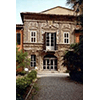
A "Gallery" or Museum of Natural History, also containing plant specimens, was instituted at Pisa's Botanical Gardens around 1591 at the initiative of Grand Duke Ferdinand I de' Medici, who contributed to enriching the collections with rare, precious pieces, in keeping with the taste of the time. Today, only a few rooms of the sixteenth-century museum remain, reached through the Botanical Gardens, while the surviving materials are kept in the Museo di Storia Naturale at Calci.
Towards the end of the 18th century the organisation of today's Botanical Museum was begun, thanks to the commitment of Gaetano Savi, Professor of Botany and Director of the Gardens until 1842. At present the Museum contains plant specimens and collections of plants gathered from the time of its origin for the purpose of study and as teaching aids. Specifically, the General Herbarium is formed of university collections dating from the 18th century to the present, while other Personal Herbariums, consisting of the collections of several different botanists, were acquired by the university from the late 19th century to around 1960. Three other collections are noteworthy: the wood collection, with longitudinal and cross sections of various arboreal species; the collection of plant samples including those of fruit, flowers, inflorescences and seeds; the collection of fossils coming from Tuscany and Lazio, dispersed during World War II and found again in the 1990s.
Also interesting are the wax models of fruits, macroscopic fungi [non si usa anche in inglese "macromycetes" per macromiceti?] and anatomical parts of various plants, made in the period 1830-1840 by the famous Florentine wax modeller Luigi Calamai, and the educational plates, consisting of large panels with pencil or ink drawings, and occasionally water-colours, accomplished mainly by Enrico Cristofani in the second half of the 19th century.
The Museum shares with the Botanical Gardens a Library and Archives, kept at the rich Library of the Department of Botanical Science.
(Francesco Marchetti)
****************************
Texts by Elena Fani
English translation by Victor Beard
Last update 13/feb/2008



 = libraries and archives
= libraries and archives  = scientific research centers
= scientific research centers  = memorial places of scientists
= memorial places of scientists = public health places
= public health places = places of science and worship
= places of science and worship = places of technology
= places of technology  = museums and collections
= museums and collections  = villas and gardens of science
= villas and gardens of science

